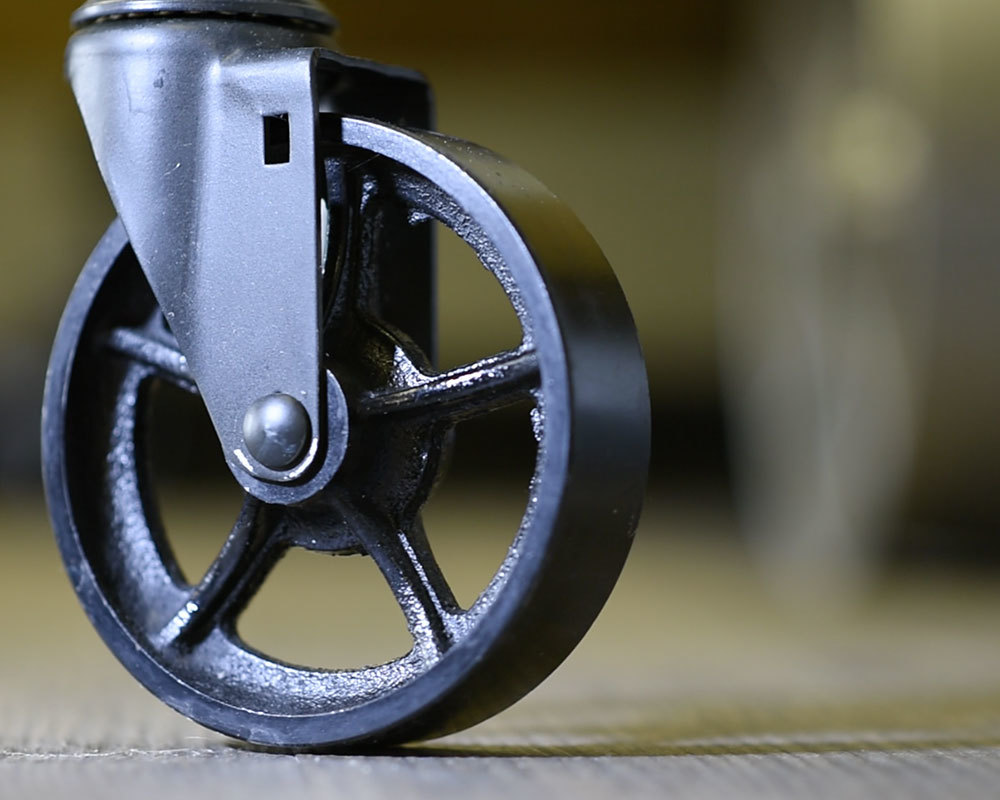In today’s world of electrification, almost everything has become powered. That’s still not the case though when it comes to load-handling equipment, more specifically their wheels. The majority of material handling equipment relies on what are known as caster wheels or casters.
They are non-powered components that can turn freely in all directions or just in one as long as you push the platform they’re on. Casters have made moving large and heavy items far easier especially in warehouses and similar storage facilities since they are so simple and practical at the same time. But not all casters are made the same.
Types of High-Temperature Wheels

Glass-Filled Nylon
There are many different casters when it comes to the material they are made of but one of the most commonly used temperature-resistant wheels are glass-filled nylon wheels. They can operate in temperatures up to 490°C or 550°C if exposed intermittently. A glass-filled nylon high temperature wheel is also able to resist mild chemicals, metal chips, oil, grease, steam and water.
Cast Iron
Also known as semi-steel casters, cast iron wheels are able to resist temperatures of up to 800° if made with the right bearings and lubricated accordingly. They are made for both smooth and rough surfaces and can operate in conditions where there are mild chemicals, metal chips, animal fats, oil and grease. With a hardness between 90 and 95A cast iron wheels are quite strong.
Phenolic
With a set of phenolic wheels, you can use it to move items in conditions where temperatures reach up to 550°C. Just like cast iron wheels, phenolic ones are able to perform in operating conditions with mid chemicals, oil, grease and animal fats. Phenolic wheels just have a lower durometer rating which sits between 75 and 85D
TPR
Thermoplastic rubber or TPR is a special type of material that is soft and strong hence why it’s used in casters. While TPR may not have the highest operating temperature it makes for wheels that can operate in temperatures up to 180°C but only when exposed intermittently. You can use TPR wheels in areas where there are animal fats, metal chips, mild chemicals, steam and water.
What to Consider in High-Temperature Wheels

Load Capacity
An important factor of any caster wheel including high-temperature ones is their load capacity. This refers to the amount of weight the wheels can bare safely. Obviously, cast iron and glass-filled nylon wheels can sustain more weight than phenolic and TPR wheels. Typically wheels with a higher durometer rating have a higher load capacity. Anyhow, you should always look for high temperature wheels with a slightly higher load capacity than that of the platform they’re going to be used on.
Noise & Vibrations
Although high temperature wheels are all about strength and durability, they shouldn’t make your work environment loud. This largely depends on the floor but the material the casters are made of makes a big difference in how noisy your load-handling equipment is going to be. TPR and phenolic high temp wheels are much quieter than cast iron and glass-filled nylon casters. Less noise and fewer vibrations mean you can focus on what’s at hand much easier.
Chemical Resistance
Most high-temperature casters are able to deal with mild chemicals as you already know but anything harsh is usually not going to be a good idea to put them up against. In this case, you should look for wheels that have their core made up of any of the above-mentioned materials and the outside made of a different material, preferably one that can survive more aggressive chemicals. This combination will ensure that the casters last much longer.
Diameter
The size of casters or their diameter will greatly affect not only the smoothness of a load-handling platform but also the ease of use. Larger diameter high temp wheels are made to absorb bumps better and any other floor imperfections.
But they are not as easy to manoeuvre since their size makes it more difficult to make them turn and roll. Once they’re rolling it’s much easier to maintain their speed than smaller casters. A small diameter high temperature wheel is going to make moving around a lot more convenient even with a heavy load. Keep in mind though, smaller wheels are not as forgiving if you have a rough floor to make them go over, no matter the material they’re made of.
Floor & Protection
Talking about the floor of your facility or store, you should remember to pair it with the right type of high temperature wheels. The correct material will make it not only make for a more convenient experience but it will also ensure that the casters last for a long time without the need for cumbersome maintenance procedures or lots of repairs. Sensitive surfaces go well with softer materials while harsher ones go better with stronger materials.
